Simple Sound Science Activities for Kids
Let’s talk about sound. My children are very familiar with it, at least they are quite good at volume. Kids are really great at producing sound, and most of them enjoy being loud.
So why not take advantage of that interest and talk about how sound works. How do we hear sounds? What are sound waves? Can we see sound? Give your children an excuse to be loud for an afternoon. Here are 4 easy and fun sound science experiments for toddlers and preschoolers.
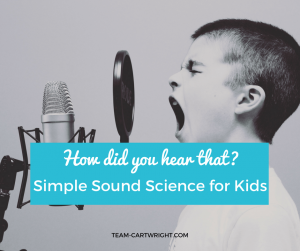
What's In This Post?
How Does Sound Work?
What are Sound Waves?
Before we get into the fun activities, let’s learn a bit about how sound works.
What is sound? Sound is carried by waves, not unlike the waves we looked at when we learned about color. These waves require a medium to travel through, which on earth is the atmosphere that surrounds us.
We can’t see them, but there are millions of molecules floating around everywhere. These molecules transfer energy, which is how a wave moves.
This is the same way colors move as waves through the atmosphere. The difference between sound and color is that color comes from light waves and sound waves come from vibration.

Sounds originate through some sort of vibration. Think of hitting a gong. When you strike it, it vibrates. These vibrations are energy waves that travel through the air.
Only unlike color, which is perceived with the eye, these waves interact with our eardrums. Our eardrums vibrate and pass on the waves to our inner ear, where our brain can perceive it as sound.
(There is more to the anatomical part of hearing, but our focus right now is on the sound waves outside of the ear.)
Want more wave science? Learn how colors work!
Properties of Sound Waves
There are two big properties that describe sound waves: frequency and amplitude.
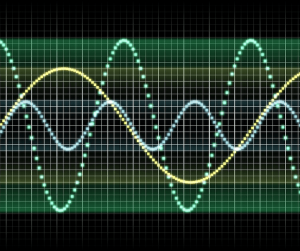
Frequency
Frequency is how quickly the wave is moving. Is it a quick vibration that created the sound, or a slow one?
Frequency impacts pitch. A fast frequency will create a higher pitch. A slower frequency has a lower pitch.
This is a great time to explain pitch to little ones too. It’s easy to demonstrate. Speak in a high voice (like you just had some helium), this is a high pitch. Have your child try it. Then have them speak in a very low voice (I told Ben to talk like Daddy), this is a low pitch.
Amplitude is how big the wave is, and this affects volume. (This is where the word amplifier comes from.) A big wave will have a loud sound. A small wave will have a quiet sound.
Here is an example to help visualize these. Think of a great big gong. When you hit it big slow vibrations are created. It makes a deep, loud sound. This is because it has big waves that are moving slowly.
Now think of a tiny gong. When you hit it you create small fast vibrations. It makes a high sound and is quieter than the big gong. This is because it has small waves moving quickly.
See waves in action with science by the pool.
Sound Wave Activities
Now that we know a bit about how sound waves work, let’s explore them in action!
Balloon Amplifier
Want to make the world’s easiest amplifier?
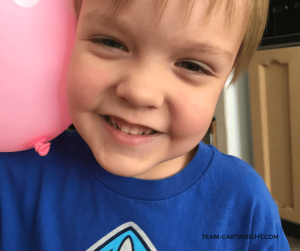
You Need:
- A Balloon
To Do:
Blow up a balloon, hold it up, and tap on it. It doesn’t make a super loud sound. Next, hold the balloon up to your child’s ear and lightly tap on it. It sounds pretty loud!
Why does this happen? When you blow up a balloon you are packing it with air molecules. They are very close together and transmit sound waves super well compared to the air just around us normally.
When we tapped the balloon while we were just holding it those waves had to move through the less compressed ambient air to get to our ears, and the sound is softer.
When we hold the balloon up to our ears the sound just has to get through the tightly packed molecules in the balloon and we hear a louder sound. It is amplified.
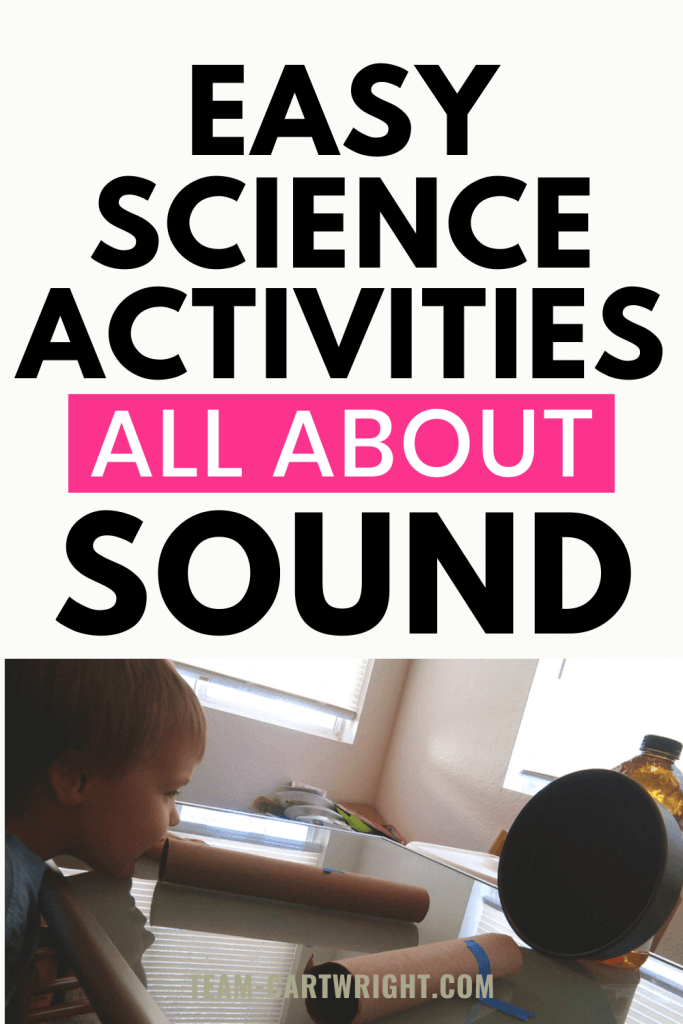
See Sound
Can you see sound? Well, we can’t see the sound waves as they move through the air. (Though picture the waves you see when you drop a rock into water. They look a lot like that!) But we can see the vibrations that create sound transmitted between surfaces with a little help.
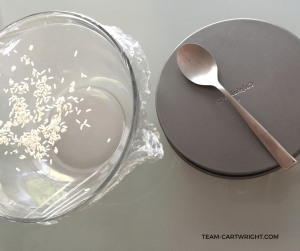
You Need:
- Big Bowl
- Plastic Wrap
- Uncooked Rice
- Metal Pan
- Metal Spoon
To Do:
Put the plastic wrap tightly over the bowl. (One sheet, as tight as you can get it.) Put about 1 teaspoon of rice on the plastic.
Then hold the metal pan close to the bowl and have your child hit it with the spoon. The harder they hit it the better. The rice will dance!
What is happening is that the pan vibrates, creating a sound wave. This wave is transmitted through the air molecules and cause the plastic wrap to start vibrating as well, making the rice dance!
You are seeing the result of the sound waves in the rice. Are any patterns formed? Try hitting the pan harder and then more gently. How does the behavior of the rice change?
If you want to be a cool mom see if your child can hit the pan hard enough to bounce the rice right off the plastic!
Transmit Sound Through String
Remember making telephones with your friends using cans and string? Yeah, me neither. I’m not that old. (And how did kids drill holes in the cans anyway?) But we can use this idea to show kids how sound travels through a medium.
You Need:
- A Long Piece of Yarn
- 2 Spoons of Different Sizes
- A Pencil
To Do:
Take the yarn and tie it around the spoon so the spoon is in the middle of the piece. Take the two long pieces on either side and have your child hold them up to their ears.
You want to bunch up the string loosely and have them put it in their ears. Not too far (safety!), more like you are just trying to block out other sounds. Then tap on the spoon with the pencil. And watch their faces.
Hitting the spoon with the pencil causes the spoon to vibrate. Remember, sound needs a medium to travel through, and in this case, the yarn is that medium. It transmits the sound directly to your ears.
What makes it so much louder? In an open room, sound waves transmit in all directions. So what you hear is not everything that is being produced. Air molecules are not very tightly packed, which also makes the sound less intense.
With the yarn most of the wave is being sent right to your sound receptors, making it more distinct and louder.
Have your child try the other spoon. How do the sounds compare? Try different lengths of string. What does that do to the sounds?
Want to make more music? Here are 5 easy DIY instruments to make at home!
How Do Echos Work?
How do echoes work? What makes you hear a sound a second and third time like that?
You Need:
- 2 Paper Towel Tubes
- Pie Pan
To Do:
Prop the pie pan up on a table so it is vertical. Take one paper towel tube and place it on the table, angled a bit but aimed at the pie plate. Take the other paper towel and have it angled the opposite way, also aimed at the pie plate.
Have your child put his ear to one of the tubes while you talk softly into the other. You can hear what is said through the other tube!
The sound waves you create by speaking travel through the tube. They are directed through the tubes, hit the pie plate, and bounce off, traveling back through the other tube. You are hearing the echo.
An echo is when a sound wave bounces off of a surface. Some surfaces are better for echoes than others. For example, bathrooms are often very good at creating echoes. This is because they are usually full of hard surfaces like tile that bounce back sound waves effectively. A fun bath time activity is to explore your echo with your child.
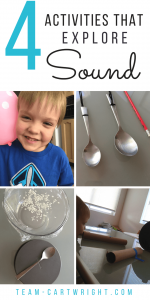
Be Loud
These are simple and fun ways to demonstrate how sound waves work with kids. And you don’t have to stop with these. Make some musical instruments and see what other vibrations you can create. (This is also a great sensory activity. Learn why those are so important: The Big Benefits of Sensory Play)
Take a nature walk and tap on things with sticks. Try making high pitches and low pitches. Explore echoes. Sounds are all around us. Encourage your kids to take a listen and explore the science behind the sound.

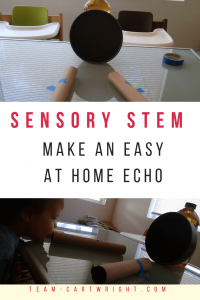
Find your next fun activity!
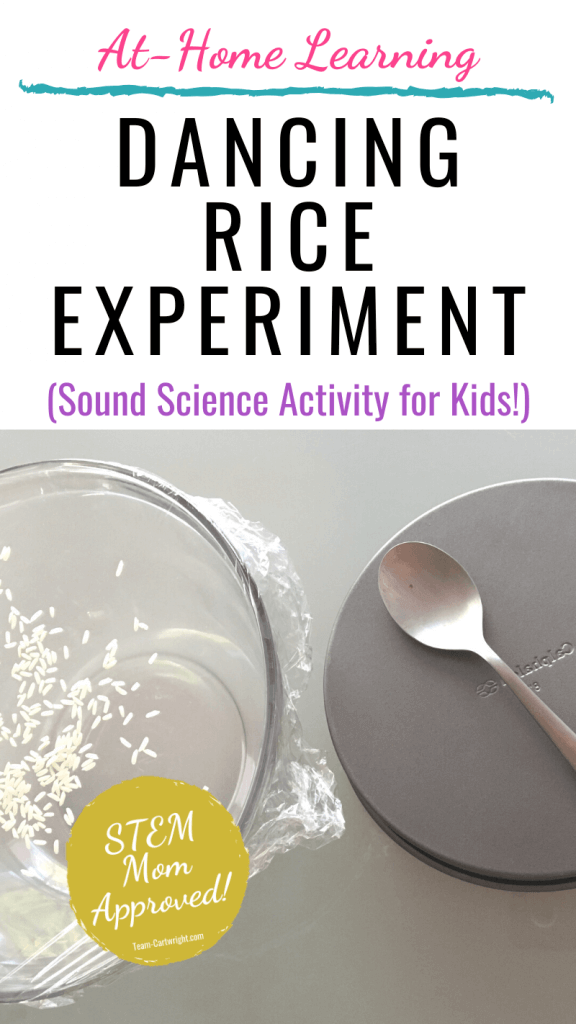

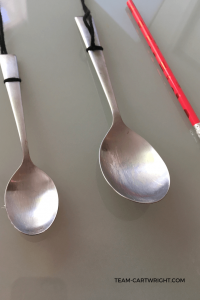
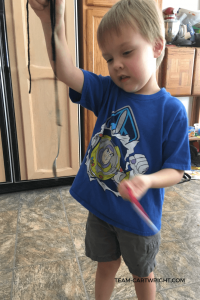
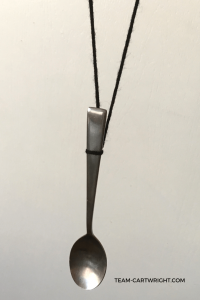
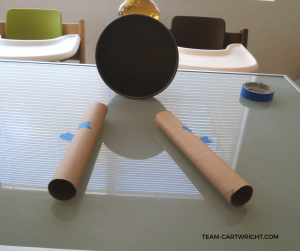

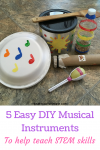
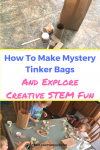
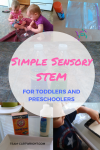
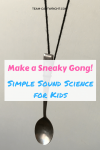

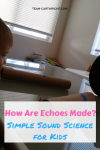
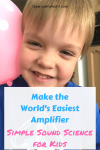
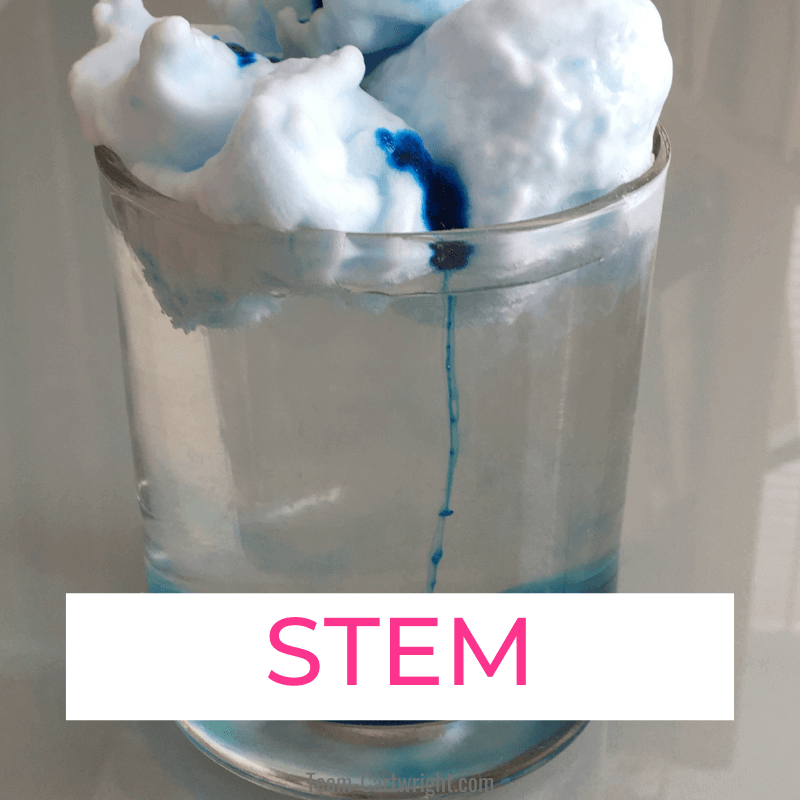
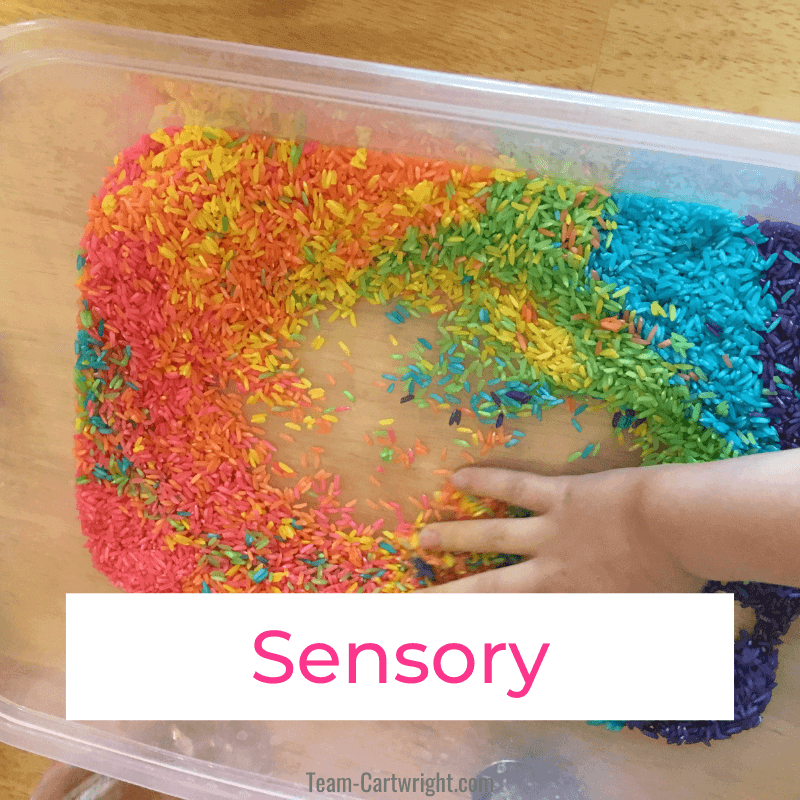
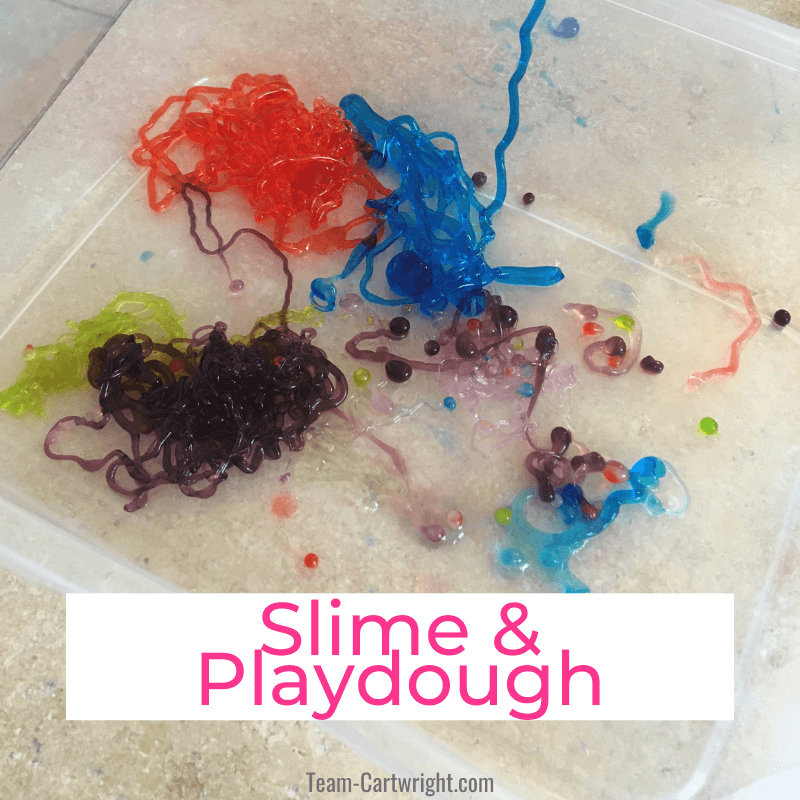

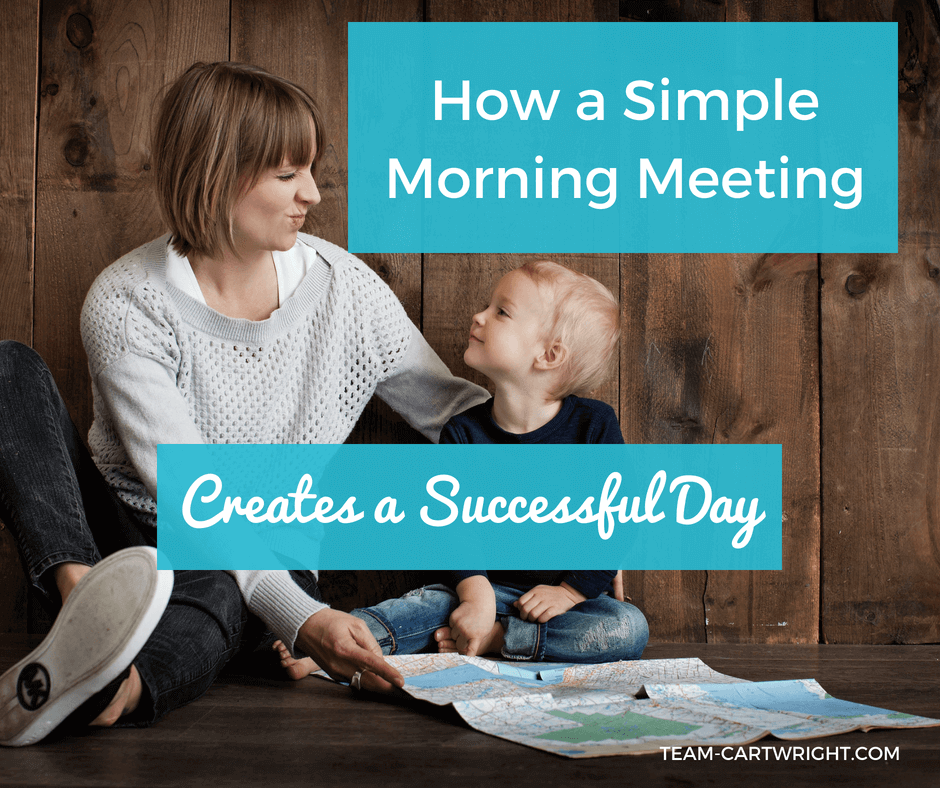
Tiffany
Sunday 24th of March 2019
My son absolutely loved these activities! We had a spoon on a string for days. Thank you so much for the ideas, it made our preschool time fun.
Kim
Sunday 24th of March 2019
I'm so glad he liked it! We love the spoon one too. It's so exciting when our kids get into STEM!
Toni
Monday 9th of July 2018
These are wonderful activities! My girls are going to love learning about sound!
Julie
Saturday 23rd of June 2018
These are such fun and easy sound experiments! Great ideas.
kimcartwright
Saturday 23rd of June 2018
They were fun! It's cool to look at something we experience every day in a new light.